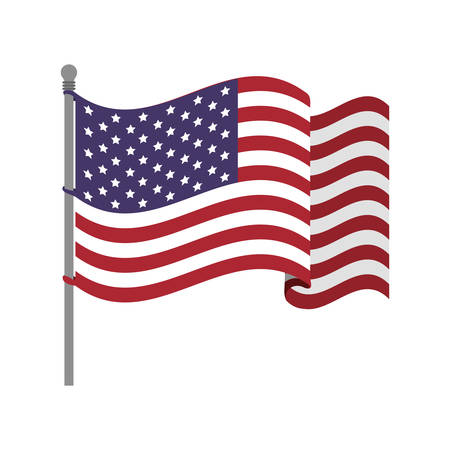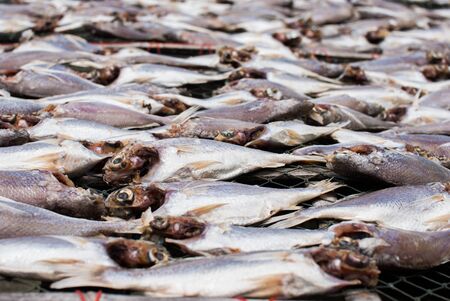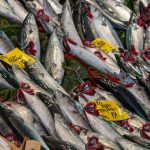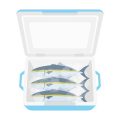1. Introduction to America’s Fishing Heritage
Fishing isn’t just a pastime in the United States—it’s a way of life for millions of Americans, stretching from the quiet lakes of Minnesota to the salty coasts of Florida and California. For generations, families have passed down fishing skills, favorite spots, and most importantly, their go-to lures. These iconic fishing lures have become much more than simple tools; they are woven into the fabric of American culture and tradition.
The Heartbeat of American Angling
From weekend warriors to tournament pros, anglers across the country share stories about their first big catch or that unforgettable day on the water. Often at the center of these tales is a legendary lure—a piece of fishing history that continues to spark excitement and nostalgia.
How Lures Became Legends
In the early days, American anglers crafted their own lures from wood, feathers, and metal scraps. Over time, certain designs stood out for their ability to catch fish and capture imaginations. Companies began mass-producing these favorites, and soon names like Rapala, Heddon, and Mepps became household words in fishing circles.
Iconic Lures That Shaped American Fishing
| Lure Name | First Introduced | Known For | Popular Species |
|---|---|---|---|
| Heddon Zara Spook | 1939 | Walk-the-dog topwater action | Bass, Pike |
| Mepps Aglia Spinner | 1938 (France), US popularity 1950s | Classic spinning blade design | Trout, Bass, Panfish |
| Rapala Original Floating Minnow | 1936 (Finland), US since 1959 | Lifelike wobble motion | Bass, Walleye, Trout |
| Johnson Silver Minnow Spoon | 1923 | Weedless spoon design for heavy cover | Bass, Redfish, Pike |
| Berkley PowerBait Worms | 1980s | Scented soft plastics revolutionized bass fishing | Bass, Catfish, Panfish |
This deep connection between American anglers and their lures has helped shape not only how people fish but also the stories they tell. As we explore these iconic baits further, we’ll see how each one earned its place in fishing history—hooking both fish and fishermen alike.
2. The Birth and Evolution of Classic Lures
Fishing in America wouldn’t be the same without its iconic lures—those legendary baits that have stood the test of time. Let’s dive into how some of the most classic fishing lures came to life, spotlighting the creative minds behind them and the stories that made these lures household names among anglers from coast to coast.
The Pioneers of American Fishing Lures
Back in the late 1800s and early 1900s, inventors started experimenting with new ways to catch more fish. They tried everything from carved wood to shiny metal, hoping to mimic the movement and look of real prey. Here are a few innovators who changed fishing forever:
| Lure Name | Inventor | Year Introduced | Origin Story |
|---|---|---|---|
| Heddon Dowagiac | James Heddon | 1898 | Inspired by whittling a piece of wood by a Michigan pond, Heddon accidentally created a lure that attracted bass, sparking the birth of the Heddon Company. |
| Creeek Chub Pikie Minnow | Henry Dills & Co. | 1916 | Dills and his partners aimed to make a lifelike minnow bait for big predators, leading to one of America’s longest-running lure brands. |
| Rapala Original Floater* | Lauri Rapala (Finland) | 1959 (popularized in U.S. in 1960s) | Lauri’s hand-carved design was so effective it became a sensation after being introduced stateside, changing how Americans fished for game species. |
| Zara Spook | Heddon Company | 1939 | This topwater lure introduced the famous “walk-the-dog” action, quickly becoming a favorite for bass anglers everywhere. |
| Mepps Aglia Spinner | André Meulnart (France) | 1938 (popularized in U.S. post-WWII) | Brought back by returning GIs, this French spinner revolutionized American trout and bass fishing with its flash and vibration. |
*Though invented in Finland, the Rapala’s impact on U.S. fishing culture is legendary.
The Stories Behind the Classics
Many of these lures were born out of pure curiosity or even happy accidents. For example, James Heddon’s first lure was just a piece of wood tossed into a pond, only to find it brought fish in droves. Others, like the Creek Chub Pikie Minnow, were carefully crafted after years of trial and error, trying to imitate natural baitfish movements as closely as possible.
The Role of Innovation in Lure Design
Early lure makers paid close attention to what fish responded to—shape, color, vibration, and action—and adjusted their designs accordingly. As materials evolved from wood to plastics and metals, so did the ability to fine-tune lures for different water conditions and target species.
A Lasting Legacy on American Fishing Culture
The classic lures didn’t just change how people fished—they helped build a culture around sportfishing in America. These inventions made fishing more accessible and fun for everyone, from weekend warriors to tournament pros. Today, you’ll still find these legendary lures in tackle boxes across the country—a true testament to their staying power and continued performance on the water.

3. The Hall of Fame: Lures That Changed the Game
When it comes to fishing in America, certain lures have earned legendary status among anglers. These iconic baits didnt just catch fish—they changed the way people fish and influenced generations. Let’s take a closer look at some of the most famous American fishing lures, their special features, and why they remain favorites on tackle boxes across the country.
Spotlight on Legendary Lures
| Lure Name | Brand | First Released | Key Features | Why Its Iconic |
|---|---|---|---|---|
| Rapala Original Floater | Rapala | 1936 | Balsa wood body, realistic swimming action, versatile for fresh and saltwater | Revolutionized lure design with life-like motion; a go-to for multiple species |
| Heddon Zara Spook | Heddon | 1939 (as “Zara Spook”) | “Walk-the-dog” surface action, cigar-shaped body, durable construction | Pioneered topwater fishing excitement; famous for explosive strikes from bass |
| Johnson Silver Minnow | Johnson | 1923 | Spoon shape, weedless design, fluttering action, gold/silver finishes | Perfect for fishing in heavy cover; beloved by bass and pike anglers alike |
| Berkley PowerBait Worm | Berkley | 1980s | Scented soft plastic, lifelike feel, wide color range | Takes finesse fishing to a new level; irresistible scent technology for finicky fish |
| Cotton Cordell Big O | Cotton Cordell | 1970s | Square-bill crankbait, loud rattle, bold colors | Kicked off the square-bill craze; known for triggering aggressive strikes from bass in shallow water |
The Stories Behind the Lures
Rapala Original Floater: Born in Finland but embraced by American anglers, this lure mimics injured baitfish perfectly. Its balsa wood construction gives it a distinct wobble that predatory fish find irresistible. It’s considered a “must-have” because it works on everything from largemouth bass to northern pike.
Heddon Zara Spook: This is the lure that made “walking the dog” famous. The zig-zag surface action triggers dramatic topwater attacks and makes every cast exciting. Many old-timers still recall their first heart-stopping strike with a Zara Spook!
Johnson Silver Minnow: With its weedless spoon design, this lure lets anglers fish where others can’t—right through lily pads and thick grass. Its simple yet effective flutter catches everything from redfish down south to walleye up north.
The Impact on American Fishing Culture
Lures like these aren’t just tools—they’re part of American fishing heritage. Each one tells a story of innovation and success on lakes and rivers all over the country. Their continued popularity shows how much anglers value performance and tradition when choosing what to tie on next.
4. From Tackle Box to Trophy Fish: Performance in the Water
Americas most iconic fishing lures arent just popular because of their looks—they’re trusted by anglers from coast to coast for one big reason: they catch fish. Whether you’re chasing largemouth bass in a Midwest lake or redfish along the Gulf Coast, these classic lures have proven their worth time and time again.
How Iconic Lures Shine in Different American Waters
Each legendary lure is designed with certain waters and fish species in mind, but their versatility is what really sets them apart. Here’s a look at how some of America’s favorite lures perform across different fishing environments:
| Lure Name | Best For | Freshwater Performance | Saltwater Performance |
|---|---|---|---|
| Rapala Original Floating Minnow | Bass, Trout, Pike | Deadly on bass and pike in lakes and rivers, excellent for twitching over weed beds | Effective for speckled trout and redfish near coastal marshes when retrieved slowly |
| Zara Spook (Topwater) | Bass, Striped Bass, Redfish | Walk-the-dog action draws explosive strikes from bass in ponds and reservoirs | Great for sunrise surface action with striped bass and redfish along coastal flats |
| Mepps Aglia Spinner | Panfish, Trout, Smallmouth Bass | Catches everything from bluegill to smallmouth in streams and creeks thanks to its flashy blade | Can trigger bites from saltwater species like flounder near estuaries (use corrosion-resistant model) |
| Berkley PowerBait Worms | Largemouth Bass, Catfish | A staple for bass anglers—Texas-rigged or wacky style in lakes and farm ponds | Not typically used in saltwater, but some anglers experiment with scented plastics for surf perch |
| Spoon (e.g., Dardevle) | Northern Pike, Trout, Salmon, Redfish | The wobble attracts aggressive strikes from pike and trout in cold-water lakes and rivers | A favorite for targeting Spanish mackerel and redfish along the Atlantic and Gulf coasts |
Why Anglers Rely on These Classics
The trust American anglers place in these lures isn’t just about nostalgia—it’s about results. Over generations, these baits have earned their reputation through:
- Consistency: They produce strikes season after season.
- Versatility: Many work across multiple species and water types.
- Ease of Use: Even beginners can tie one on and start catching fish right away.
- Toughness: Built to handle everything from rocky bottoms to toothy predators.
- Tweakability: Anglers can customize color, size, or retrieve style to “match the hatch” wherever they go.
The American Experience: From Lakes to Oceans
No matter where you fish across the U.S., chances are you’ll find someone casting a tried-and-true lure that’s been around for decades. Their ability to adapt—from glassy mountain lakes to choppy Atlantic surf—keeps them front-and-center in tackle boxes everywhere. That’s why these iconic lures have become part of the American fishing tradition.
5. Cultural Impact and Popularity
Americas most iconic fishing lures have become much more than just tools for catching fish—they are woven into the fabric of American culture. From TV shows and movies to everyday conversations at bait shops, these lures are household names that spark nostalgia and excitement across generations.
How Lures Became Household Names
Some lures, like the Heddon Zara Spook or the Rebel Pop-R, earned their fame through decades of proven performance on lakes, rivers, and ponds from coast to coast. Anglers shared stories of legendary catches with these baits, passing down tips and tales from parent to child. Companies marketed their lures on television during Saturday morning fishing shows, in glossy outdoor magazines, and even at county fairs, making names like Rapala and Mepps instantly recognizable in American households.
Lures in American Media
The influence of iconic lures extends into popular media. Fishing shows often highlight certain baits as “secret weapons,” while movies set in rural America might show characters tying on a classic lure before heading out at dawn. Even cartoons and commercials have used famous lures as symbols of relaxation, adventure, and connection with nature. This representation helps cement their place in American life.
Lure Appearances in Media Examples
| Lure Name | Media Appearance | Cultural Reference |
|---|---|---|
| Zara Spook | Bassmasters TV Show | Known for topwater action scenes and tournament wins |
| Rapala Original Floater | A River Runs Through It (film) | Symbolizes the art of fishing in America’s rivers |
| Mepps Aglia Spinner | Outdoor Life Magazine ads | Pictured as the go-to lure for all anglers nationwide |
| Berkley PowerBait Worms | Sponsorship on Major League Fishing broadcasts | Associated with modern bass fishing success stories |
Influence on Recreational Fishing Trends
These iconic lures have shaped how Americans fish for fun. The popularity of topwater plugs like the Zara Spook or soft plastics like the PowerBait Worm has led to new techniques, tournaments, and even regional traditions around bass fishing. Tackle boxes across the country almost always include these classics because they work—and because they connect anglers to a larger tradition.
Why These Lures Remain Popular Today
- Nostalgia: Many anglers remember their first catch with a classic lure, fueling lifelong loyalty.
- Performance: Decades of innovation mean these lures consistently deliver results.
- Cultural Identity: Owning or using an iconic lure is part of being an American angler.
- Accessibility: These lures are easy to find at every bait shop or sporting goods store nationwide.
- Community: Sharing stories about these lures brings together anglers from all walks of life.
This deep cultural impact is why Americas most iconic fishing lures continue to inspire both veteran fishermen and the next generation of anglers.
6. Modern Takes on Timeless Designs
America’s most iconic fishing lures have stood the test of time, but today’s anglers want more than just nostalgia—they want performance and innovation, too. That’s why modern lure companies are reimagining classic designs with new materials, advanced technology, and a fresh look while still honoring the legacy of the originals.
Reinventing Classics with New Materials
The earliest American lures were made from wood and metal, but now you’ll find these legendary shapes crafted from high-impact plastics, composite blends, and even eco-friendly materials. This not only makes them tougher but also allows for better action in the water and brighter, longer-lasting colors.
| Lure Type | Classic Material | Modern Upgrade |
|---|---|---|
| Jitterbug | Wood/Metal | Molded Plastic, Laser-Finished Paints |
| Spoon (e.g., Daredevle) | Stamped Metal | Nickel-Plated Alloys, UV Coatings |
| Bass Popper | Balsa Wood | High-Density Resin, 3D Eyes |
| Soft Plastic Worms | Rubber-Based Plastics | Scented Soft Plastics, Biodegradable Materials |
Technology Meets Tradition
Brands like Rapala, Berkley, and Strike King use computer-aided design to fine-tune lure movement and vibration. Some modern lures feature built-in sound chambers or LED lights to attract fish in murky waters—something old-school baits could never do. Even the hooks are sharper and more corrosion-resistant thanks to new manufacturing techniques.
Examples of Iconic Lures Reinvented:
- Zara Spook “Walking” Bait: Now available in ultra-realistic color patterns and equipped with upgraded split rings and hooks for better hooksets.
- Cotton Cordell Red Fin: Updated with rattles inside the body for extra noise and attraction.
- Berkley PowerBait Worms: Classic worm profile infused with scent technology that entices bass to bite and hold on longer.
- Mepps Aglia Spinner: Traditional spinner blade now offered in UV-reactive finishes for higher visibility.
A Nod to Heritage—and Better Catches!
Tackle manufacturers know that many anglers grew up using these classic baits with their parents or grandparents. By blending timeless shapes with modern features, today’s lures give everyone a chance to experience that same magic—plus a few more bites along the way.
7. Conclusion: The Lasting Legacy of Iconic Lures
Americas most iconic fishing lures have earned their place in angling history for good reason. From the classic Heddon Zara Spook to the legendary Rapala Original Floater, these lures are more than just tools—theyre part of our culture and shared fishing memories. Over generations, they have helped families bond on lakeshores, sparked friendly competitions among buddies, and given weekend warriors a shot at landing their personal best.
What makes these lures stand out isn’t just their unique designs or how well they catch fish—its how theyve inspired anglers across the country. Kids remember their first bass on a jitterbug, while seasoned pros rely on the tried-and-true effectiveness of a spinnerbait when the bite gets tough. These lures have seen it all, from local ponds to national tournaments, and theyve been there for every big catch story told around the campfire.
Why Do Iconic Lures Matter?
| Lure Name | First Released | Cultural Impact |
|---|---|---|
| Heddon Zara Spook | 1939 | Popularized topwater “walk-the-dog” technique; staple in tackle boxes nationwide |
| Rapala Original Floater | 1936 | Brought finesse fishing to America; international favorite for multi-species anglers |
| Rebel Pop-R | 1970s | Mainstreamed popper-style surface action; go-to for explosive strikes |
| Berkley PowerBait Worm | 1988 | Changed soft plastic fishing with scent technology; boosted catch rates for beginners and pros alike |
| Mann’s Jelly Worm | 1967 | Pioneered soft plastic worms in bass fishing; inspired countless imitators and innovations |
The Future Inspired by the Past
The ongoing popularity of these lures continues to shape the direction of American fishing. New lure makers look back at the classics for inspiration while adding modern twists—like better hooks, lifelike finishes, and eco-friendly materials. Anglers young and old still reach for these legends because they work and because they connect us to something bigger than ourselves: the traditions, stories, and joy of fishing in America.
How Legendary Lures Shape Tomorrow’s Anglers
- Inspiring Innovation: Tackle companies blend time-tested designs with new tech.
- Passing Down Traditions: Parents teach kids using the same lures they grew up with.
- Building Community: Shared experiences and stories unite fishermen across generations.
- Sparking Passion: A memorable catch on a classic lure can ignite a lifelong love of angling.
The Enduring Spirit of Iconic Lures
No matter how much technology advances or how many new products hit the shelves, Americas most iconic fishing lures will always hold a special spot in our tackle boxes—and our hearts. They remind us that sometimes, the best way forward is to honor what came before while casting toward new adventures.


